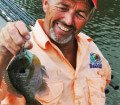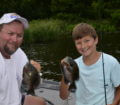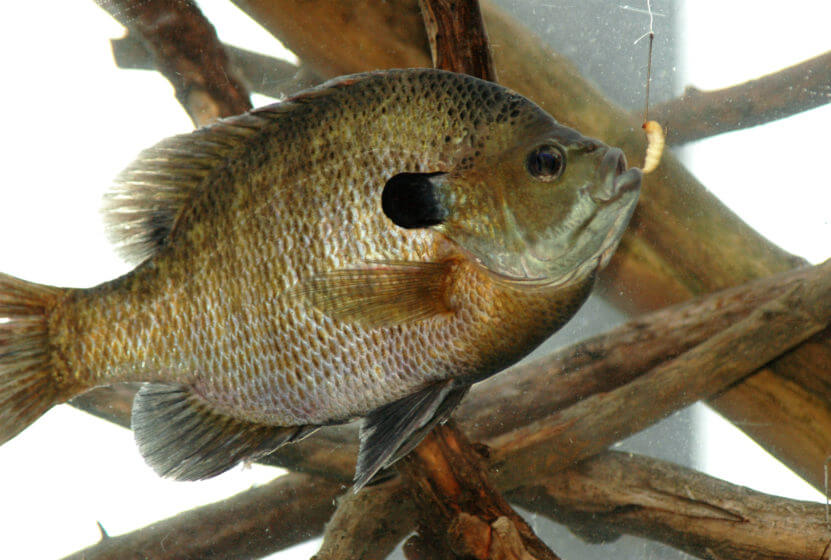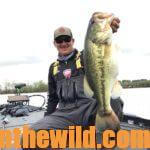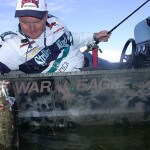John’s Note: Billy Blakely is the chief guide for Blue Bank Resort (http://www.bluebankresort.com – 877-258-3226) on Reelfoot Lake in northwest Tennessee. From May through October, Reelfoot is one of the premier bluegill fishing lakes in the nation. Because he’s been fishing and guiding all his life, Blakely has assumed through the years that he knows where every bluegill bed on the lake is located until recently when technology drastically has changed his ability to find and take bluegills.
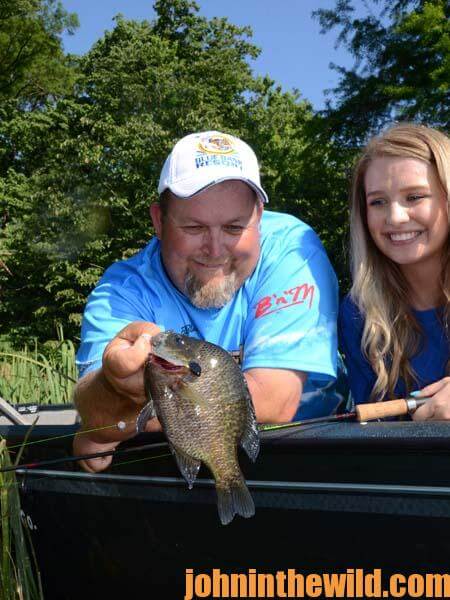 I was pretty confident that I knew where there were at least 100-bluegill beds on Reelfoot Lake. Over the years, many old-time fishermen and guides not only had shown me the bluegill beds they had located, but they also taught me how to find bluegill beds. I was taught to go to shallow water and look for bubbles coming up from the bottom. If I could find some foam-like bubbles, generally there would be bluegills under those bubbles. When bluegills are on the bed, they fan the bed with their tails, which release bubbles trapped on the bottom of the lake. To find the bluegills, all I had to do was go into the shallow waters of Reelfoot and pinpoint the bubbles. Over the years, I made mental notes where these bluegill beds were. When I had customers who wanted to catch bluegills, I could go to these same beds year-after-year and find and catch bluegills the old way.
I was pretty confident that I knew where there were at least 100-bluegill beds on Reelfoot Lake. Over the years, many old-time fishermen and guides not only had shown me the bluegill beds they had located, but they also taught me how to find bluegill beds. I was taught to go to shallow water and look for bubbles coming up from the bottom. If I could find some foam-like bubbles, generally there would be bluegills under those bubbles. When bluegills are on the bed, they fan the bed with their tails, which release bubbles trapped on the bottom of the lake. To find the bluegills, all I had to do was go into the shallow waters of Reelfoot and pinpoint the bubbles. Over the years, I made mental notes where these bluegill beds were. When I had customers who wanted to catch bluegills, I could go to these same beds year-after-year and find and catch bluegills the old way.
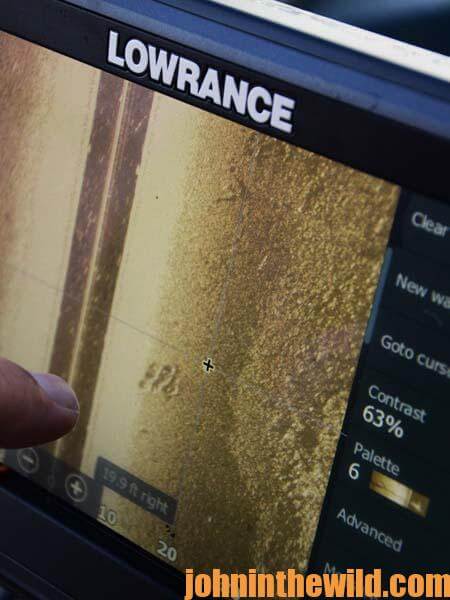 But a few years ago, I got a Lowrance (http://www.lowrance.com/) high-definition side-scanning depth finder, and I began to use it to identify bluegill beds. I’d take that side-scanning depth finder to the locations where I knew there were bluegill beds, look at those beds on the screen of the depth finder and see that the resembled honeycomb cereal with numerous indentations in the bottom. I learned that the more holes I could see on that side- scanning depth finder, the bigger the bluegill bed would be, and the more fish it would hold. I also learned how to see the bluegills above the beds. Once I knew what to look for, I set out to find more bluegill beds on Reelfoot Lake. After I learned what a bluegill bed looked like, I realized there were a lot of other bluegill beds located relatively close to the bed I already knew about, but I never had seen those beds before. Often the new beds I pinpointed were right under the boat where I was fishing the beds that I already had located. However, those deeper bream beds were completely unknown to me or anyone else, because they were farther out in the water, and they were deeper than we ever had fished.
But a few years ago, I got a Lowrance (http://www.lowrance.com/) high-definition side-scanning depth finder, and I began to use it to identify bluegill beds. I’d take that side-scanning depth finder to the locations where I knew there were bluegill beds, look at those beds on the screen of the depth finder and see that the resembled honeycomb cereal with numerous indentations in the bottom. I learned that the more holes I could see on that side- scanning depth finder, the bigger the bluegill bed would be, and the more fish it would hold. I also learned how to see the bluegills above the beds. Once I knew what to look for, I set out to find more bluegill beds on Reelfoot Lake. After I learned what a bluegill bed looked like, I realized there were a lot of other bluegill beds located relatively close to the bed I already knew about, but I never had seen those beds before. Often the new beds I pinpointed were right under the boat where I was fishing the beds that I already had located. However, those deeper bream beds were completely unknown to me or anyone else, because they were farther out in the water, and they were deeper than we ever had fished.
To learn more about bluegill fishing, go to www.amazon.com/kindle/author/johnephillips, and click on his Kindle eBook and print book, “Reelfoot Lake: How to Fish for Crappie, Bass, Bluegills and Catfish & Hunt for Ducks.”

